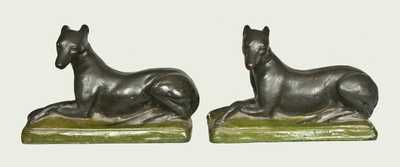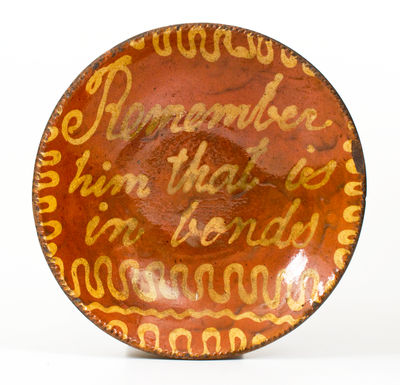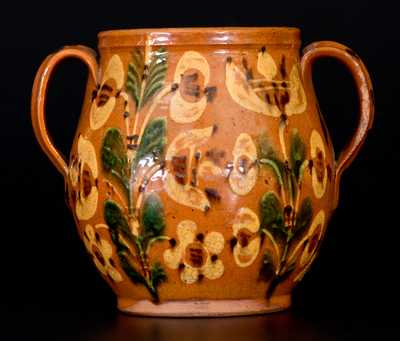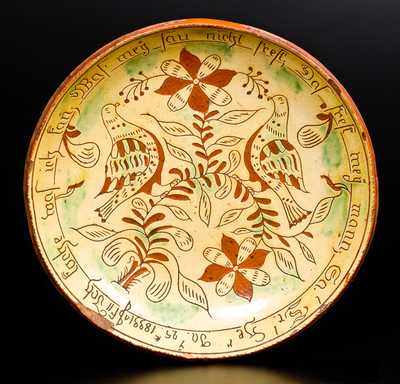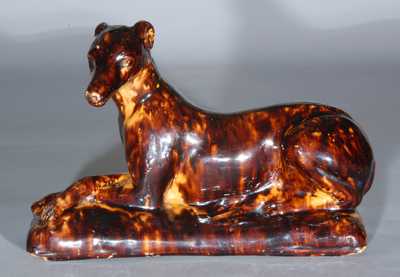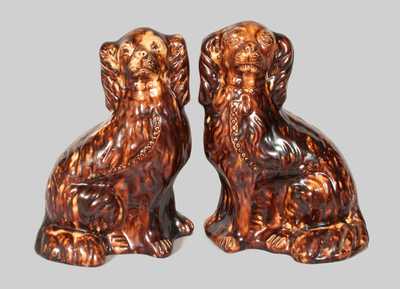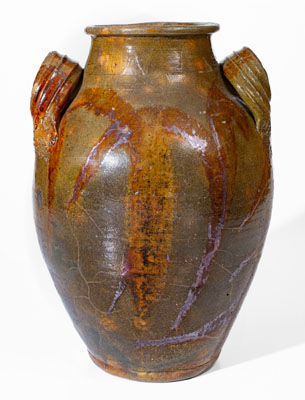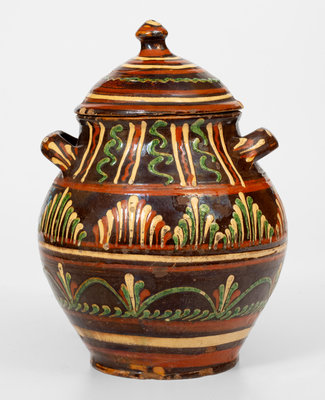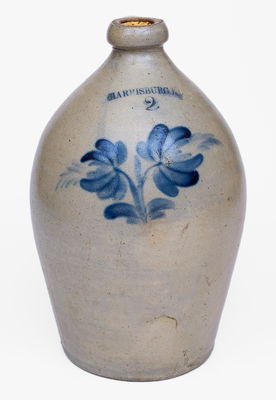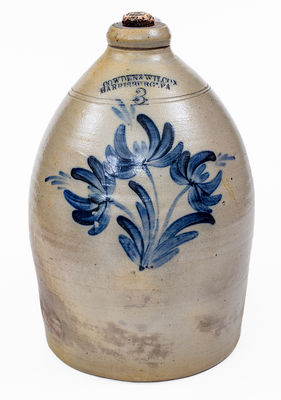Extremely Rare Slip-Decorated Redware Keg Bank, Stamped "Adam B. Pfaltzgraff / York, PA," late 19th / early 20th century, diminutive wheel-thrown keg with raised banding, recessed top and underside, and carved coin slot in top, brush-decorated with manganese slip along its banding, the surface covered in a clear lead glaze. Impressed on underside with Adam B. Pfaltzgraff stamp. Adam Buchar Pfaltzgraff (1876-1955) was the grandson of Johann George Pfaltzgraff (1808-1873), the founder of the American Pfaltzgraff potting dynasty who immigrated from Germany to the United States in 1833. While Adam Pfaltzgraff does appear as a potter at the main Pfaltzgraff stoneware pottery in York city in the 1915 York directory, it appears that this rare object was made at a redware pottery owned by his immediate family in the northern suburbs of the town, in the vicinity of Johann George Pfaltzgraff's well-documented earlier Foustown shop. According to the 1989 Pfaltzgraff: America's Potter, Adam Pfaltzgraff's father, Cornelius B. Pfaltzgraff (1848-1912), was believed to have "worked exclusively in redware. By 1879, he had purchased a 200 acre farm in Foustown where he worked as a farmer and potter and was referred to as a 'crock manufacturer' in tax records for that year." He continued to own this pottery up until his death in 1912. Adam B. Pfaltzgraff is to our knowledge a completely undocumented potter; he does not appear in either the previously noted book (a very detailed history of the family's potting enterprises) or Jeaneatte Lasansky's Central Pennsylvania Redware Pottery. It is difficult to ascertain exactly when he made this object, but since he may have been operating his father's shop at any point prior to Cornelius's death, it would seem to date anywhere between the mid 1890's and mid 1910's. (Quite notably, this is the same Adam Pfaltzgraff who is fairly well-known today as a folk artist making cement animal sculptures in the mid 20th century.) An extremely rare example from one of the preeminent American potting families of the period, and the first redware object of theirs that we have ever handled. Smooth wear around coin slot, created when money was removed a long time ago. Chips to top and bottom edge of bank. A small chipped area to band at shoulder of bank. H 3 1/2".









